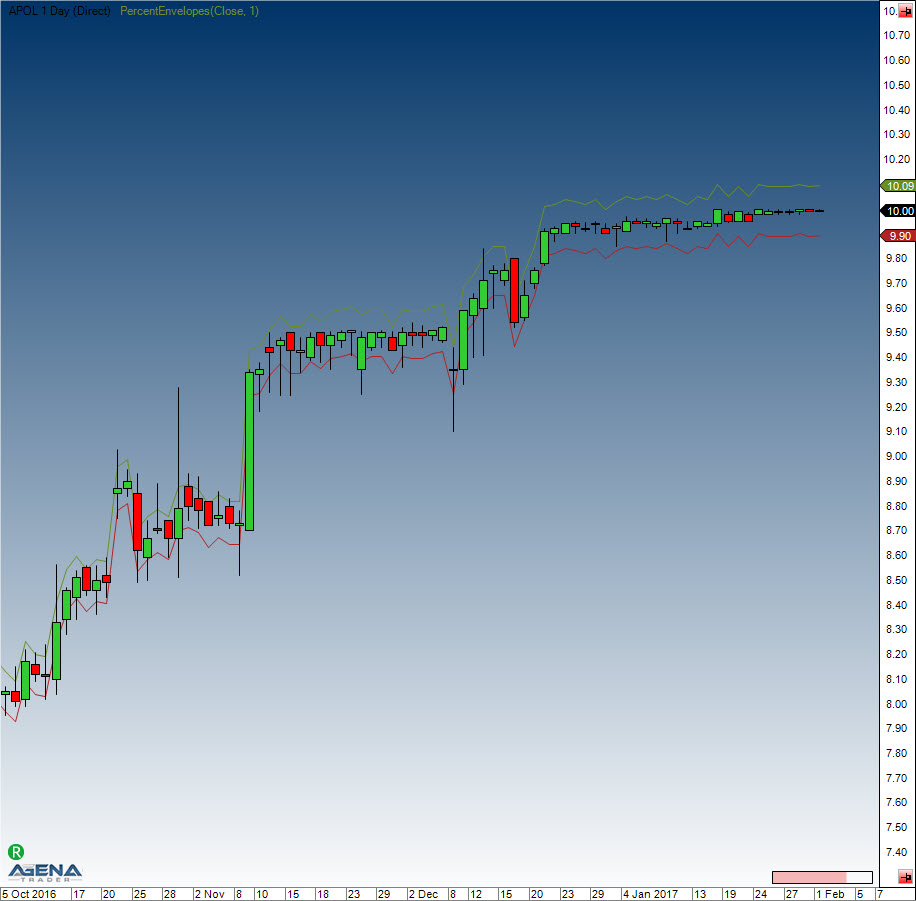PercentEnvelopes
Description
The Percent Envelopes indicator draws an upper and a lower band around a predefined value with a distance of a specified percentage value. The trader can specify which data series the entry value should be (highs, lows, closing price, another indicator etc.).
It is possible to use an SMA as the entry value. In this case, the upper and lower bands will be displayed with a distance of 1.5%.
Interpretation
Similarly to the Bollinger Bands, the Percent Envelope indicator can be used to make buy or sell decisions and to determine whether the price is under- or overvalued.
The Percent Envelope should never be used to make decisions based solely on the output, but should be used in conjunction with other indicators to confirm signals.
Usage
PercentEnvelopes(double percent)
PercentEnvelopes(IDataSeries inSeries, double percent)
//For the upper band
PercentEnvelopes(double percent).UpperPercentBand[int barsAgo]
PercentEnvelopes(IDataSeries inSeries, double percent).UpperPercentBand[int barsAgo]
//For the lower band
PercentEnvelopes(double percent).LowerPercentBand[int barsAgo]
PercentEnvelopes(IDataSeries inSeries, double percent).LowerPercentBand[int barsAgo]Return value
double
When using this method with an index (e.g. PercentEnvelopes(2)[int barsAgo] ), the value of the indicator will be issued for the referenced bar.
Parameters
inSeries Input data series for the indicator
percent Difference in % for the bands (from the input value)
Visualization

Example
Last updated